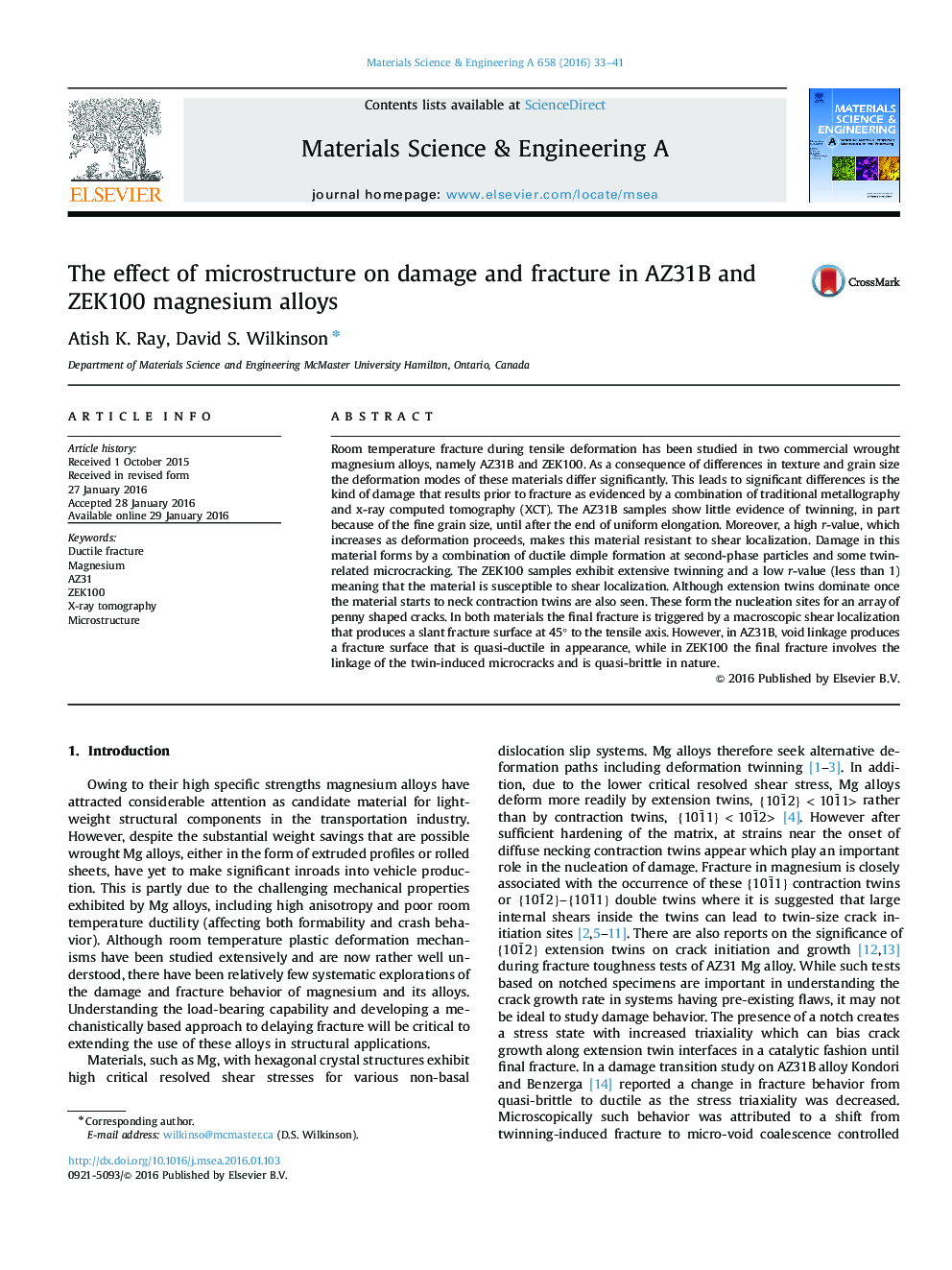| Article ID | Journal | Published Year | Pages | File Type |
|---|---|---|---|---|
| 1573610 | Materials Science and Engineering: A | 2016 | 9 Pages |
Abstract
Room temperature fracture during tensile deformation has been studied in two commercial wrought magnesium alloys, namely AZ31B and ZEK100. As a consequence of differences in texture and grain size the deformation modes of these materials differ significantly. This leads to significant differences is the kind of damage that results prior to fracture as evidenced by a combination of traditional metallography and x-ray computed tomography (XCT). The AZ31B samples show little evidence of twinning, in part because of the fine grain size, until after the end of uniform elongation. Moreover, a high r-value, which increases as deformation proceeds, makes this material resistant to shear localization. Damage in this material forms by a combination of ductile dimple formation at second-phase particles and some twin-related microcracking. The ZEK100 samples exhibit extensive twinning and a low r-value (less than 1) meaning that the material is susceptible to shear localization. Although extension twins dominate once the material starts to neck contraction twins are also seen. These form the nucleation sites for an array of penny shaped cracks. In both materials the final fracture is triggered by a macroscopic shear localization that produces a slant fracture surface at 45° to the tensile axis. However, in AZ31B, void linkage produces a fracture surface that is quasi-ductile in appearance, while in ZEK100 the final fracture involves the linkage of the twin-induced microcracks and is quasi-brittle in nature.
Related Topics
Physical Sciences and Engineering
Materials Science
Materials Science (General)
Authors
Atish K. Ray, David S. Wilkinson,
